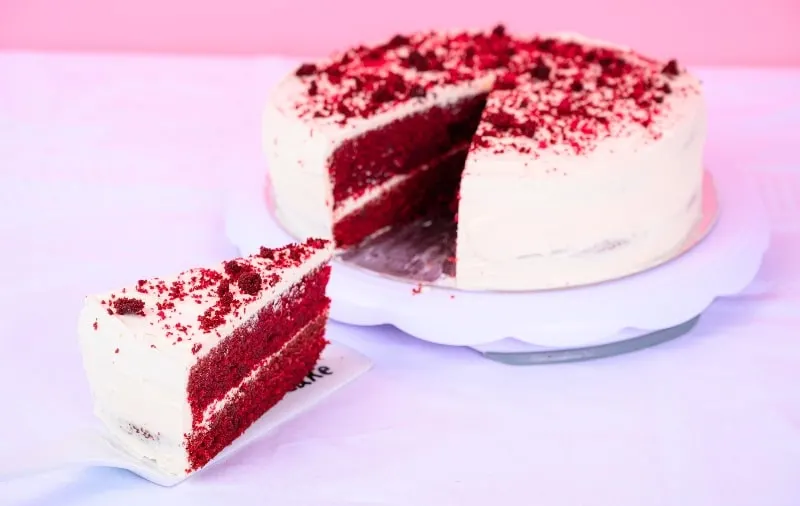If you’re considering using bread flour to make your cake, then I’m guessing you’re out of any other type of flour. If you haven’t got the right flour to make a good cake, then don’t bother. It takes a while to make a nice cake, so it’s not worth spending the time trying to make one if you’re going to use bread flour.
Bread flour shouldn’t be used to make cakes because it will create too much gluten, leading to a cake with a chewier texture, which isn’t what you want. Cake flour is favored because it creates much less gluten and therefore results in a softer and lighter cake.
The difference in gluten development is all down to the protein content of the flour. This is because the protein (two types of protein to be specific) is what turns into gluten when combined with water. The more protein in the flour, the more gluten can be developed.
Bread flour can contain anywhere from 10-15% protein whilst cake flour sits around 7-10% protein content, meaning that the cake flour is less able to create gluten, which makes it more suitable for softer bakes, like cake.
Think about it. Bread flour is used specifically for bread products whilst cake flour is used specifically for cake products. The two types of flour have different purposes and shouldn’t be swapped.
WIth that said, making a cake with bread flour will still work – it just won’t have the same cakey texture you expect. If you choose to make cake with it, then you just need to know that you can’t expect it to be super soft. On the other side of this, cake flour shouldn’t be used to make bread since it doesn’t have enough protein to build a good gluten network.
If You Really Need To Use Bread Flour Then You Can. Here’s What To Do
Okay, so it’s not the end of the world if you use bread flour for cake. Although I’ve made it sound that it’s the worst thing you can do, it can actually produce a decent result. Not amazing, just decent.
Although it would make sense for cakes to be chewy if they’re made with bread flour, it doesn’t always have to be the case. See, gluten is either developed over time (when combined with liquid and left to sit) or through mechanical action (kneading/mixing). By just combining the dry and wet ingredients, there likely isn’t going to be enough mechanical action to develop much gluten in the batter. You shouldn’t be leaving the batter to sit out for too long either.
Your aim is to mix the ingredients until just combined and then pour the batter into the cake tin and put it in to bake as soon as possible. The less gluten that’s developed, the better the cake is going to be.
If you do everything right, then you’ll be on your way to making some tasty cake, despite using bread flour. If you don’t do it quite right, then it should still be tasty, but not quite as cake-like as you might want.
Another big difference between bread flour and cake flour is how finely it’s milled. Generally speaking, cake flour is milled to a finer grade than bread flour, making it easier to incorporate with the wet ingredients and allowing it to create lighter cakes. You may notice that cake made with bread flour is denser because of both the gluten development and the coarser mill. You can, however, still improve how easily the bread flour is incorporated by passing it through a fine-mesh strainer.
You Can Make A Cake Flour Substitute
If you’re really desperate to make a cake for whatever reason, you can make your bread flour slightly more similar to cake flour by just using some cornstarch.
By adding cornstarch to the flour, you’re sort of ‘diluting’ the protein, which results in less gluten development and a slightly lighter cake.
To make the cakeflour substitute, you need the following:
- 1 Cup (125g) Bread Flour
- 3 Tablespoon (24g) Cornstarch
To make it, simply add the flour and cornstarch in a bowl, then mix until combined and pass through a fine-mesh strainer once or twice. After this, you can use it as normal, but you still need to make sure to not excessively mix it so you don’t build too much gluten.

